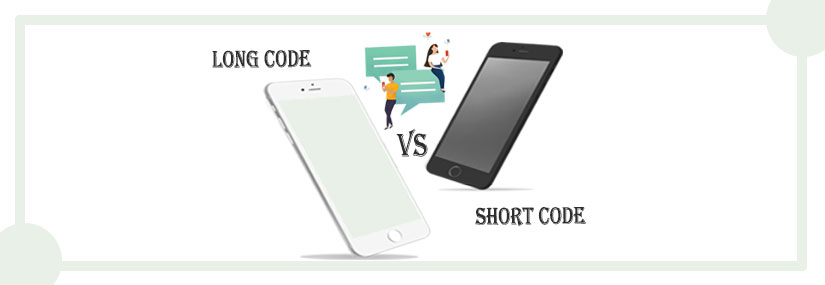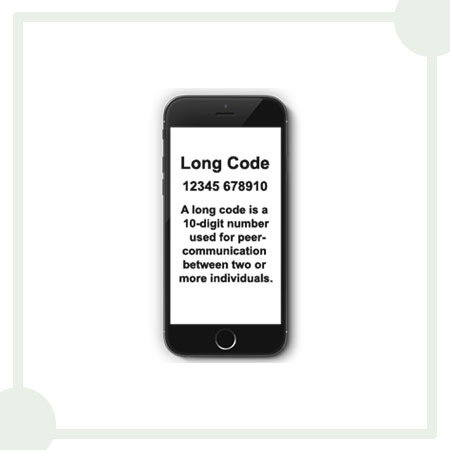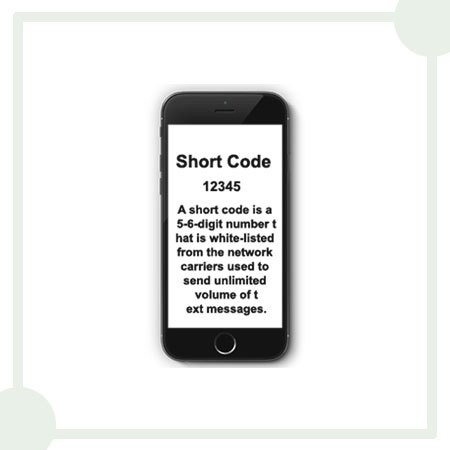
Shortcode SMS vs Longcode SMS: What is the difference and when to use it?
Almost all industries in the modern age of technology now turn to SMS for customer engagement and marketing. Businesses send appointment reminders, digital receipts, surveys, and real-time notifications, to targeted SMS marketing campaigns. They use this to increase the customer base as mobile messaging has become an extremely powerful channel. It now has a 98 percent open rate. The two most common ways of sending texts are either using a short code or a long code. If you are new to business SMS communication, time will come that you will need to make a decision; shortcode vs long code.
In this article, we will discuss what long codes and shortcodes are, their use cases, how they differ, and guidelines set by the governing bodies. Let’s dive in!

What Is A Long Code SMS?
A long code is a 10-digit number used for peer-communication between two or more individuals. They are dedicated numbers you can purchase according to desired area codes. For example, (845)-580-6454.
Uses of Long Codes
Long codes are suitable for peer communication especially for professionals who do not want to use their personal or business phone numbers upfront. The following are some common uses of long codes;
Advantages and Disadvantages of Long Codes

The most obvious advantage of long code is that it is an actual 10-digit phone number, which can be extremely appealing if your company is local and the use case is justified. For example, if you own a small restaurant in Austin, TX, you can customers text messages with a 512-area code informing them that their order is on the way as well as provide the receipt in the same message. Another advantage is that long codes have a very minimal setup time so users basically have to simply signup, add credit, purchase a number, and text away with enhanced personalization and seamless two-way conversations which has become essential for high-quality customer service in today’s tailored-business world.
Long codes do have their disadvantages to be fair. The biggest one is the fact that you cannot use them to send high volume text messages at once. This is due to a mere throughput rate of one message per second. Secondly, each number has a daily volume limit of 200 texts which may be suitable for many businesses as they can purchase more numbers since, they are extremely cheap. Again, you need to justify the use case as SMS marketing messages and long codes are prohibited for this. For example, a business that needs to send 2000 messages daily will need to purchase 10 numbers which are not only inconvenient but also not recommended.
What Is A Short Code SMS?

A shortcode is a 5-6-digit number that is white-listed from the network carriers used to send an unlimited volume of text messages. Hence, they are recommended and commonly used for high-volume texting and marketing campaigns. Shortcodes are used to opt-in prospects into a company’s marketing campaign by enabling the consumer to text a keyword to a specific shortcode in a compliant manner. However, businesses can also simply upload their existing customers into groups as long as they have their prior consent to receive messages from these businesses as per the Telephone Consumer Protection Act (TCPA).
TCPA compliance and CTIA Guidelines for Best Practices Using Short Code
Authorities monitor and govern all text messaging traffic within the US. Rules and restrictions apply according to the category a text belongs to. Laws and regulations applicable to your campaign will depend on factors like where the texts originate. Other factors include where recipients of your texts are located, where your company is located, the industry you are in, and the content of your text messages. The following are some of the restrictions in place when sending out marketing messages;
- UNSOLICITED MESSAGES – Businesses are required to obtain the prior consent of the customers to send them marketing messages.
- OPT-IN – Messages must be delivered to the recipient’s mobile device only after the user has opted in to receive them from sources where they provide their contact information. This could be a website, an event, or even a poster with keyword subscription details.
- OPT-OUT – Each marketing SMS must contain an opt-out option which is present in the system when sending out a campaign
- UNAPPROVED OR ILLICIT CONTENT – Should not send text messages containing content related to violence.
Exchange of MMS messages may cost more on your plan and the recipient’s plan. Costs vary from carrier to carrier and maybe in terms of size or message. Plus, the carriers charge both the recipient and the sender for this. SMS is much cheaper and only the carriers only charge the senders for them.
Uses of Short Codes
Short codes are used for the following most common use cases;
- Mass Texting and Text Blasts
- SMS Marketing
- Two-Factor Authentication
- Mobile Coupons and vouchers
- Mass Alert Notifications: Weather updates, RSVPs, Reminders, and Security Notifications
Opt-in Methods
- Keyword – Keywords are short words consistent with letters and/or numbers related to your product or service used to trigger a response. Keywords allow your customers or group members to join your group messaging contact list from their own phones. They do this with opt-in options from different sources like your website, event, or facility. For instance, a restaurant can have customers text “MENU” to 66599. As a result, they would get an automated call-to-action response for more information regarding discounts, menu and delivery information, etc.
- QR Code – Prospects can now subscribe to a keyword by scanning a QR code. Users can create and download their QR code and post it in different places such as social media as well as on flyers, signboards, merchandise, and other printable media.
- Sign up Widget – Sign up Widgets are unique forms that people use to have their audience subscribe directly to the campaign group instead of users manually uploading them or prospects using the keyword subscription method. Moreover, users get to design their own widgets with their own logos, widget name, text, subscriber information, and other variables. This allows them to personalize their subscription campaigns according to their requirements.
Advantages and Disadvantages of Short Codes

The main advantage of a shortcode is the ability to send unlimited volume text messages so there is no need to purchase numbers with a daily volume limit. Shortcodes have become increasingly popular in marketing due to the fact that they create a memorable experience among different audiences. SMS marketing using shortcodes also enables businesses to organize and segment their customer base for better responses. When your customers opt-in to your service, a shortcode enables them to recognize and remember you like your twitter or website address. Using shortcodes, businesses have the freedom to control their campaigns according to their requirements. This includes how many texts they want their customers to receive, the content of the message, and also message scheduling with drip and recurring campaigns.
Conclusion
To sum up, considering all the facts stated above, businesses have two great options to engage with their customers in shortcode vs longcode. Shortcodes and long codes are two independent services that US businesses commonly use for communication. So, users can use this in their search for which option fits their business requirements perfectly and commence.
